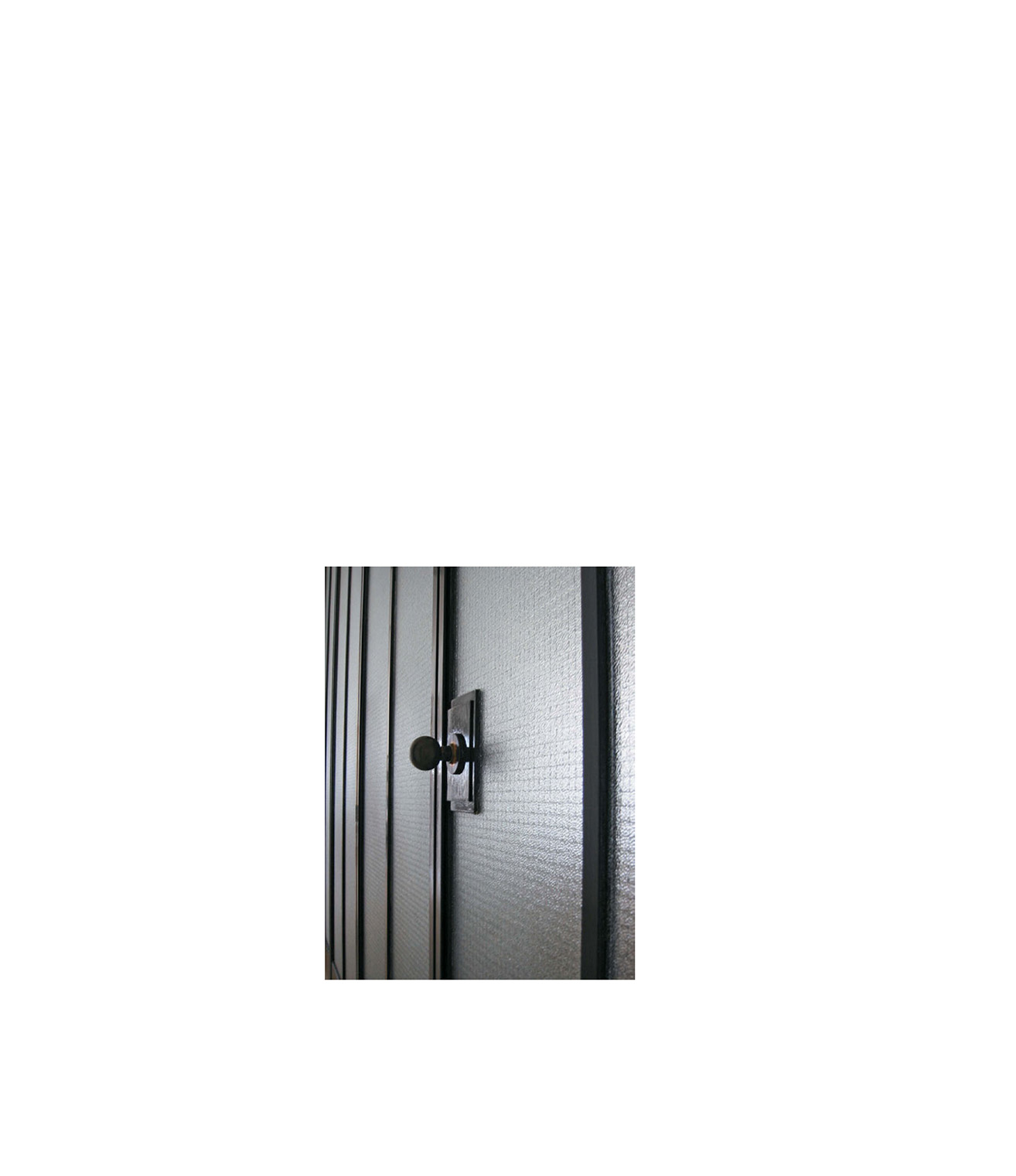
86
The view into the study. The pocket doors are made of steel frames with wire glass. On this side they open
onto the living space; to the right, they form a second translucent wall. We created all the stepped doorplates
for the loft to carry a modernist detail through the architecture. The lock set is concealed in the backplate
on the wire glass.
WIRE GLASS
Across the loft from the fireplace wall, there is a small study built out near the front entry.
Like the kitchen, the goal with the study was to portray an idea that felt historically modern,
but not reproduced. I took inspiration from the Hotel des Artistes in New York, a famous
building of artists’ studios from the 1920s, where the clients had lived prior to moving into
this loft. There was a central elevator there that I have always loved, made of metal-framed
wire glass, a material of the era, much like the metal casement windows used throughout
these early modern buildings. The elevator gave me the idea of how to build a type of vintage
glass cage for the room here, with pocket doors that would open up the walls, and let in light.
This system of glass and metal is quintessentially modern. It relates directly to Jean Prouvé’s
own buildings, as well as early Bauhaus and important modernist houses like Pierre Chareau’s
Maison de Verre. From then to now, these industrial materials can be handwrought in a way
that makes them totally elegant.